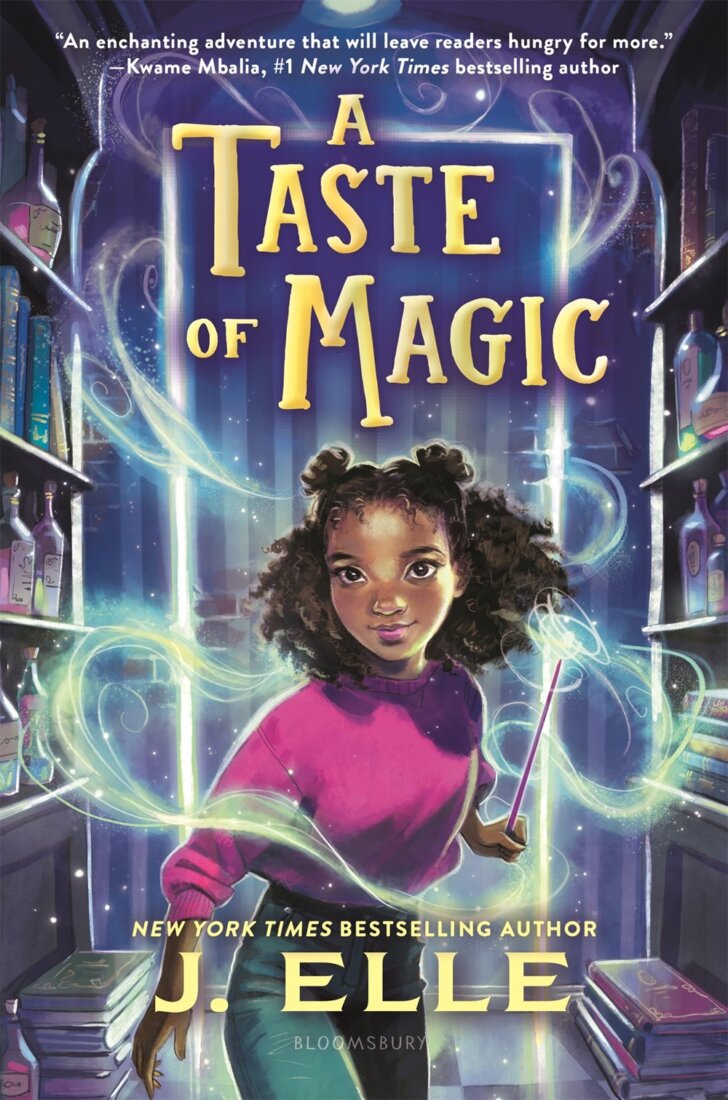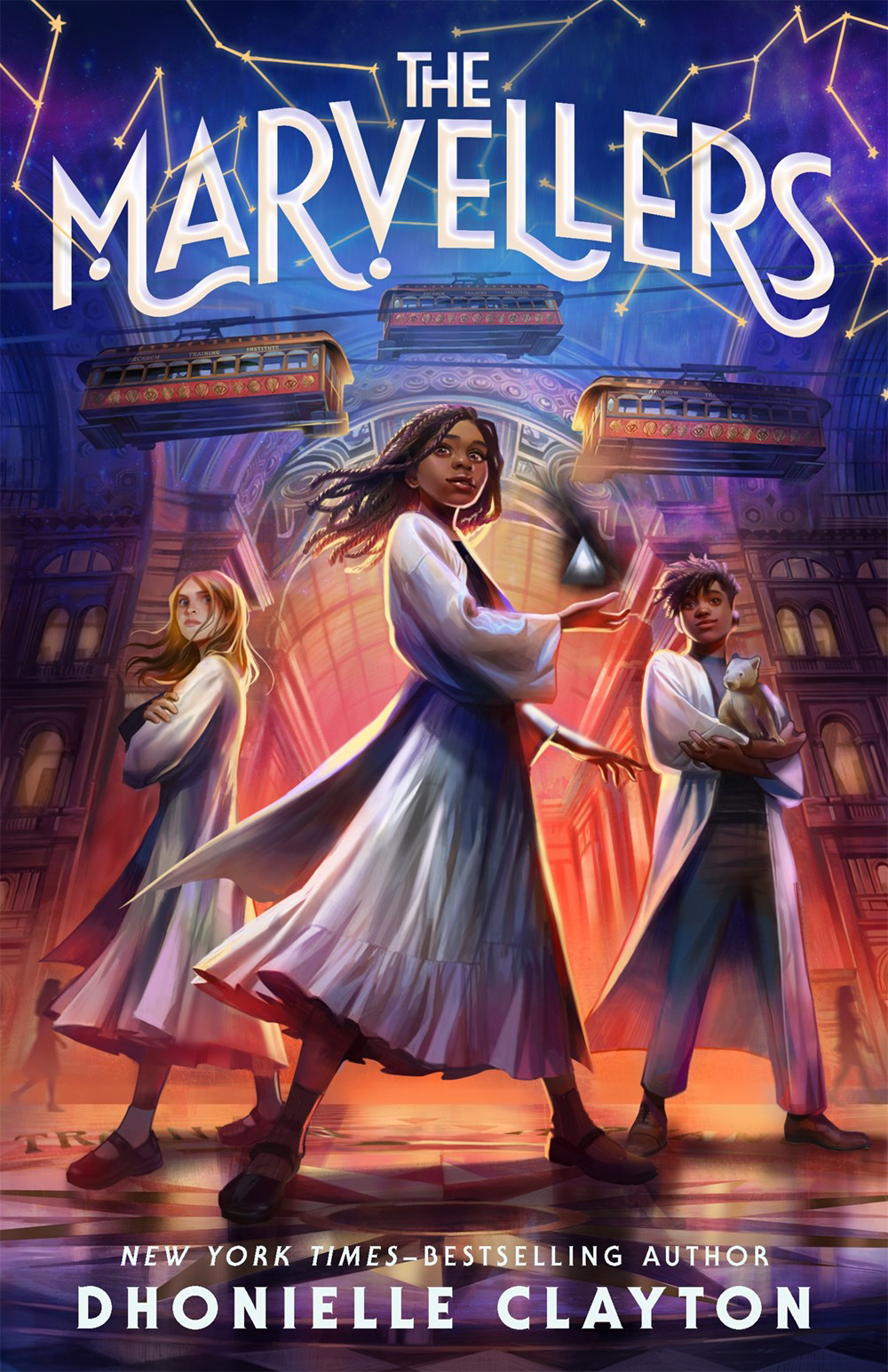When a house appears at the end of Juniper Drive, Jacqueline “Jac” Price-Dupree’s reaction isn’t what you’d expect from most 12-year-olds, but Jac isn’t like most 12-year-olds. Ever since she was diagnosed with cancer five years ago, Jac has been haunted by the fear that it might return, so when Jac sees the house, she wonders if it’s a hallucination. If it’s a symptom. The house fills Jac with terror even before she and her friends wind up trapped inside it—and before Jac discovers that the house knows her name.
Ally Malinenko’s This Appearing House is a surreal and horror-filled story about a girl who must confront her deepest fears and chart a path toward a new future.
Tell us about Jac and where she’s at when we meet her.
Jac is a pretty anxious kid. She’s been through a lot, and she is nearing her five-year anniversary from her cancer diagnosis. She’s still NED—no evidence of disease. Fun fact: We don’t use cured when talking about cancer, because there is no cure. There is only no evidence of disease.
She’s also pretty angry. She’s tired of her mother worrying and hovering. She’s tired of the elephant of a recurrence in the corner of the room all the time. She’s pretty lonely, and at the start of the book, she’s asking the universe a pretty big question. She wants to know if she’ll get what everyone else gets—a full, long life—or if she’ll die young. It’s a lot for a 12-year-old.
Jac’s story is a pretty clear response to some of the cultural narratives that exist around illnesses such as cancer. For readers who might not be familiar, could you briefly describe those narratives? Why was it important to give Jac a different story?
I was diagnosed with cancer when I was 37, and within the first couple of days I realized that warrior language (“you can fight this/you can beat this”) made me very tired very quickly. Because the truth was I wasn’t a warrior. I wasn’t brave. I was just doing what the doctors told me to do and I was hoping for the best.
Having a major disease like cancer changes you. It fundamentally splits your life into “the before” and “the after,” and while that gets smoother over time, the split is always there, like a scar. I wanted Jac to struggle with learning how to let go, because it was something that I struggled with. Letting go and moving on are not always the same thing. I also wanted to show that Jac was angry, and that anger in the face of an unjust world was a perfectly OK response to have.
Everyone looks to people who have been through trauma as some sort of inspiration. But we’re not. We’re just people that something happened to. We’re people who got unlucky and then very lucky.
“We teach kids how to fight monsters so that when a monster eventually turns up in their life, they’ll know what to do.”
This book isn’t your first foray into writing horror. What keeps you coming back to this genre?
I loved reading horror when I was younger. I started with Stephen King at much too young of an age, when I would sneak a page or two off my oldest sister’s bookshelf, so I’m definitely a horror fan.
I think I keep writing horror because I respect it. Horror trusts that kids can handle it. We adults do so much gatekeeping and shielding with kids and I always wonder why. Kids know the world is scary. Look at the last few years alone! We don’t do them any justice if we pretend otherwise.
Middle grade horror makes one promise: It will take you into the dark but it will always always always bring you back to the light. We teach kids how to fight monsters so that when a monster eventually turns up in their life, they’ll know what to do. Honestly, it’s an honor.
Where did this haunted house originate?
Haunted houses are typically metaphors for diseased minds, but I wanted this to be a metaphor for a diseased body. And I knew early on that the house was going to be there specifically for Jac, in this exact moment of her life.
What are some of your favorite haunted house narratives? Did they influence the house in this book?
Growing up, I was obsessed with The Amityville Horror, but rereading it as an adult just makes me sad to see how awful and abusive the father is. That’s an interesting example, because I feel like it’s the most well known of the economic horror subgenre—the “we bought this house and it’s haunted but we don’t have any money to leave” plot.
I am also a huge Shirley Jackson fan (who isn’t?), so I have always been a fan of The Haunting of Hill House. In fact, the opening paragraph of This Appearing House is an homage to the opening paragraph of The Haunting of Hill House.
Jac experiences a lot of truly terrifying—and incredibly imaginative—horrors when she’s trapped in the House. Which one are you most proud of? Which one was the scariest for you to write?
I’m probably most proud of the teeth scene. I had to fight to keep it in the book because my publisher thought it was too scary. In the original version, Hazel was really choking, so this version is a little softened, but yes, plates full of teeth, mouthfuls of teeth. I loved it.
The scariest one? At one point Jac is home and Hazel comes over to visit and Jac’s mother is acting very, very strange. It’s a scene that starts with a plate of eggs and ends with the kids running for their lives. That one was probably the most unnerving to write because you don’t want to have your mother, of all people, turn monstrous.
“Everyone looks to people who have been through trauma as some sort of inspiration. But we’re not. We’re just people that something happened to. We’re people who got unlucky and then very lucky.”
Tell us about the research that went into this book. Were you able to interview kids whose experiences are similar to Jac’s or talk to medical professionals who work with those kids?
Even though I am NED (no evidence of disease), I still go for monthly treatment. I spoke with some nurses about their experiences with kids. A lot of what they had to say I gave to Jac, like this idea that kids want to talk about it because they’re scared, but their parents, who are also deeply afraid, tend to brush away those conversations. But they need to happen.
Jac’s mom doesn’t get a ton of “screen time,” so to speak, but her interactions with Jac are so impactful. What do you hope kids and grown-ups will take away from her character and her relationship with Jac?
I think that Jac’s mom has a lot of unprocessed trauma, just like her daughter, and her way of dealing with it is to pretend it didn’t happen while simultaneously, consistently, fearing that it’s happening again. She goes through a checklist of symptoms when she sees Jac stumble, and that’s exhausting for her daughter.
I hope that it comes across that Jac’s mom does this out of love and fear, even though it’s probably not the best course of action. I want people to sympathize with her. Like her daughter, Jac’s mom also stood on the edge of that abyss.
I know what it’s like to love someone who is going through a life-threatening illness. Both of my parents had cancer, and I remember my father telling me, when my mother was diagnosed, that it was easier to be the patient than the caretaker. After watching what my husband went through when I was diagnosed, I think my dad was right. I hope that people are kind to Jac’s mom and see that, by the end of the book, she’s really trying.
This was an intense and emotional book to read, so I can only imagine what it must have been like to write. How did you take care of yourself as you worked on this book?
Does crying on the floor count as taking care of yourself? I kid. I think the one saving grace I had was that I had some distance between my diagnosis and writing this. I couldn’t have done it right after I was diagnosed. My whole world felt upside down. But with some distance, I realized that I had some things I wanted to share. A story I wanted to tell. Because, truthfully, even though it’s on the book jacket, the word cancer is only used once in the book. Because I never thought it was a “cancer book.” To me, it’s about trauma. About the elasticity of trauma and the work that goes into healing that trauma. That was the story I wanted to tell.
What do you hope kids who feel trapped in their own Houses take away from Jac’s story?
I hope they feel seen. I hope that they know that everything you experience, even the scary things—and maybe especially the scary things—makes you who you are. I hope they know that they might be different now, but that’s OK. All of it matters. And I hope that they remember that even if all the movies and books always depict the sick kid dying, that sometimes, the characters live. Just like they lived.
Did you trick or treat as a kid? If so, what was your favorite candy to receive? If we were to trick-or-treat at your house this year, what would we find in our buckets?
Halloween has always been my favorite holiday and I definitely went trick-or-treating, probably longer than most kids! Milky Ways are definitely my favorite chocolate, but I do love Starburst. Especially the orange ones. If you went trick-or-treating at my house, it’s M&M’S for everyone!
If you found yourself in the opposite of a haunted House—a house filled with joy and delight and serenity—what would await you inside?
Oh, I love this question. It would be filled with books and comfy nooks for naps and endless cups of tea and bottles of wine and all the best comfort food. It would always be dusk so the light would soften everything and the temperature would be just chilly enough so that you would want to snuggle in a blanket. And the house would know exactly what kind of music I’d want to hear without my even asking.
Author photo of Ally Malinenko courtesy of Bill Wadman.




































